Crepidotus spp.
Scientific names: Crepidotus mollis (Fr.) Staude;
Crepidotus applanatus (Pers.) P. Kumm.; Crepidotus
crocophyllus (Berk.) Sacc.
Derivation of name: Crepidotus means "cracked ear."
Moll- means "soft." Applanatus means
"flattened."
Crocophyllus means "saffron-colored leaves (gills)."
Common name(s): Crepidotus applanatus is called the
Flat Crep; Crepidotus mollis is called the Jelly Crep, and
Crepidotus
crocophyllus is called the Orange Crep.
Phylum: Basidiomycota
Order: Agaricales
Family: Inocybaceae
Occurrence on wood substrate: Saprobic; clustered,
sometimes
overlapping on decaying hardwoods (rarely
conifers); July through September.
Dimensions: See figure captions.
Cap: See figure captions.
Gills: Radiating from point of attachment.
Spore print: Brownish.
Stipe: Absent, attached to substrate by a short, hairy plug
of
tissue.
Veil: None.
Edibility: Unknown.
Comments: Miller indicates the presence of over 100
species
of Crepidotus in North America sharing traits
such as thin
flesh, convex to fan-shaped caps,
generally stalkless,
inhabiting wood, and having brownish
spores. Most require
the use of a microscope to identify
them. Two common species and one uncommon but
distinctive species (C. crocophyllus) are described on
this
page.
More information at TomVolkFungi.net
More informationat MushroomExpert.com:
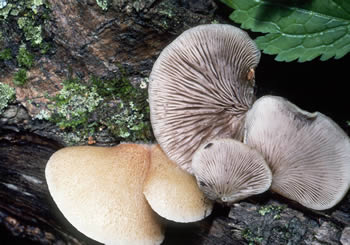
Figure 1. Crepidotus mollis. Caps are 1-8 cm wide; color
is variable
from olive-brown to ochraceous whitish. Caps
are covered
with dark brown fibrous scales.
Gills
whitish
at first but becoming brownish.
Photo ©
William Roody.
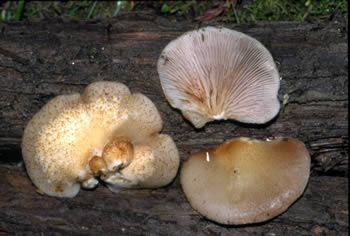
Figure 2. Another view of Crepidotus mollis.
Photo © John
Plischke III.
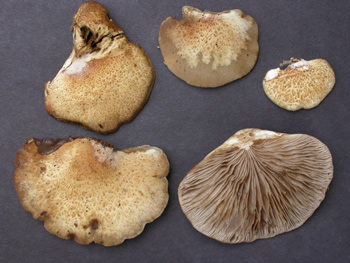
Figure 3. Crepidotus mollis specimens photographed at
the 2007 NEMF foray. Photo © Gary Emberger.
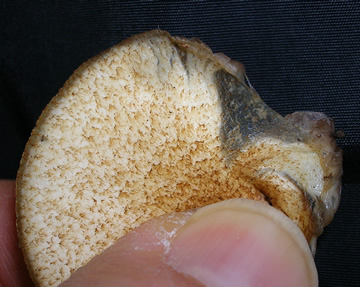
Figure 4. Crepidotus mollis is called the Jelly crep because
the gelatinous upper layer of the cap
can be stretched. When
I gently pulled apart the cap of the specimen
above, the gelatinous layer stretched to fill the void.
Photo © Gary Emberger.
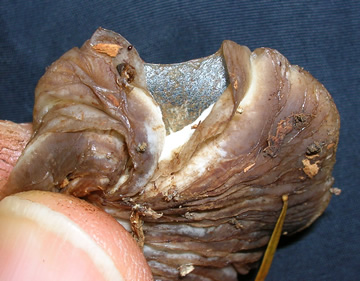
Figure 5.
Same specimen as in Figure 4 but shown from
below. The stretched gelatinous layer spans the space
between the gills. Photo © Gary Emberger.
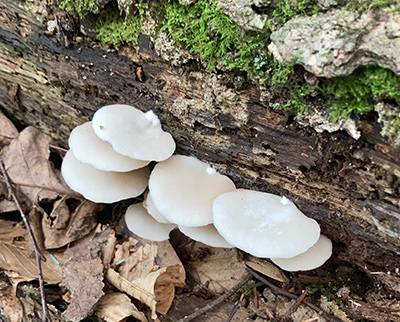
Figure 6. Crepidotus applanatus. Caps are 1-4 cm wide;
white when young, becoming brownish with age. Caps are
hairless or minutely downy.
Photo © Roseann K. Sachs.
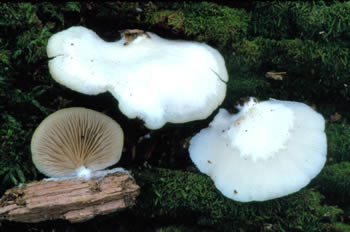
Figure 7. The white gills turn brownish when mature.
Photo © John Plischke III.
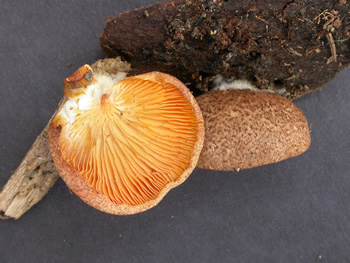
Figure 8.
Crepidotus crocophyllus with saffron-orange gills
and hairy cap, photographed at the 2007 NEMF foray.
Caps 1-4 cm wide, orange to orange-brown and minutely
scaly. Photo © Gary Emberger.